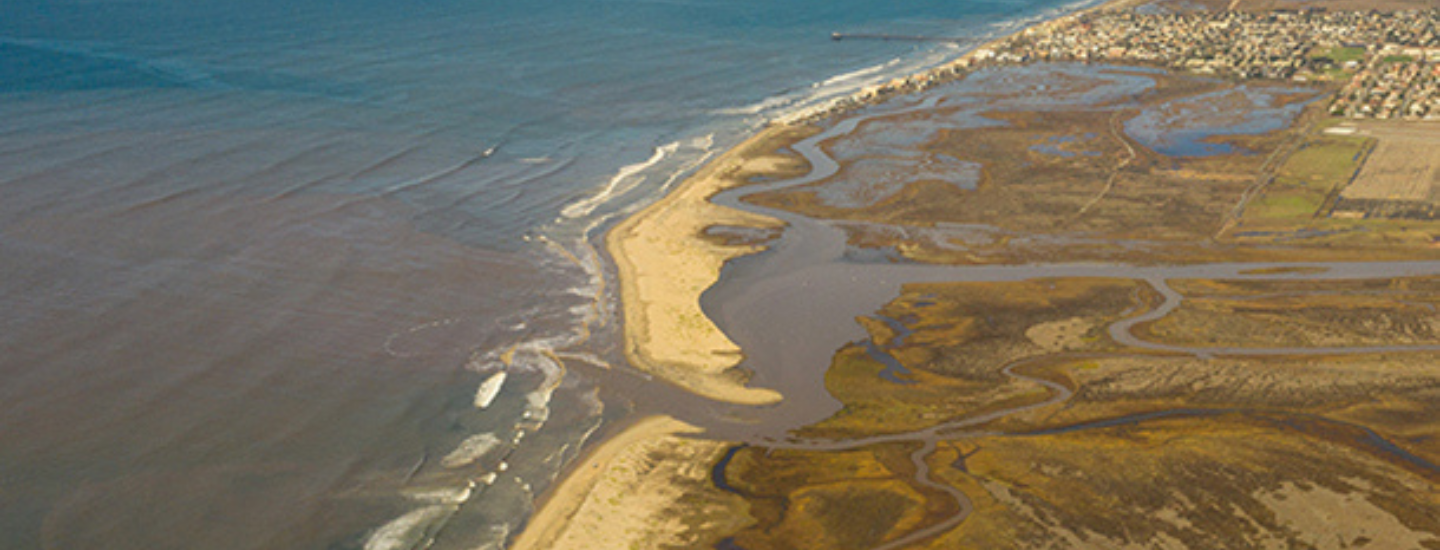
Allocate Toll Road Fees to Tijuana River Pollution Solutions
Authorize funds from a new toll road, the Otay Mesa East Port of Entry, to be used for construction and maintenance of critical wastewater infrastructure in the Tijuana River Valley.
The Tijuana River Watershed, along the U.S./Mexico border, is steeped in rich multicultural identities, layered with immense biodiversity, and contributes to high economic value to both countries. Yet, this region is plagued by severe pollution that is causing a public health and environmental justice emergency.
The Tijuana River was recently designated one of America’s 10 most endangered rivers for the second consecutive year due to severe contamination from industrial waste, raw sewage, and trash. Additionally, Surfrider’s 2023 and 2024 Clean Water Reports highlight Imperial Beach as one of the most polluted beaches in the U.S. due to high bacteria levels that exceed state health standards for recreational water quality. San Diego’s southern-most beach has been closed for more than 1200 consecutive days (as of April 2025) and counting.
This relentless pollution is destroying critical wetland ecosystems, crippling local economies, preventing coastal access for communities living in South San Diego County, weakening national security, and causing severe health issues in impacted communities along its path, including Imperial Beach, Nestor, San Ysidro, Otay Mesa, and Tijuana.
A key source of the pollution in the Tijuana River Watershed is the manufacturing boom in Mexico, incentivized by free trade agreements with the U.S. and Canada. This is further compounded by the lack of investment in infrastructure designed to protect the health of nearby communities and ecosystems. In 2023, it was revealed that the South Bay International Wastewater Treatment Plant (SBIWTP) was in a complete state of disrepair after decades of neglected maintenance. While community advocates, leaders, and the San Diego Congressional delegation have been able to secure $650 million to make necessary repairs and expand the SBIWTP, the International Boundary and Water Commission still lacks a stable, ongoing source of revenue to operate and maintain the plant. This lack of reliable, ongoing revenue for critical infrastructure projects is a big reason cross-border pollution has gotten so bad.
Meanwhile, the San Diego Association of Governments (SANDAG) has begun a new project to build a land port of entry for the San Diego-Baja California Region to accommodate the quickly growing trade in the U.S. The Otay Mesa East Port of Entry would create a new four-lane toll road along State Route 11 and is a joint venture between SANDAG and Caltrans along with state and federal partners in the U.S. and Mexico.
The addition of a new highway will likely lead to expansion and intensification of cross-border activities, transportation, and construction, exacerbating the environmental burden on communities already suffering the consequences of increased industrial activity. Without mitigation measures, this increase in transportation and manufacturing will continue to degrade water and air quality, putting the health and well-being of residents at even greater risk.
California Senate Bill 10 (SB10) provides a critical solution by allowing a portion of toll revenues from the new border crossing to fund maintenance of the SBIWTP and develop additional wastewater infrastructure projects related to the Tijuana River. This dedicated funding source for the plant’s ongoing operations and maintenance would directly support long-overdue mitigation efforts in the Tijuana River Valley, ensuring there is a revenue stream available to combat pollution, improve public health, and restore ecological balance.
We are advocating to the CA legislature to pass SB10.
Visit the Clean Border Water Now page on the Surfrider Foundation San Diego's website to learn more information about the transboundary pollution crisis.
